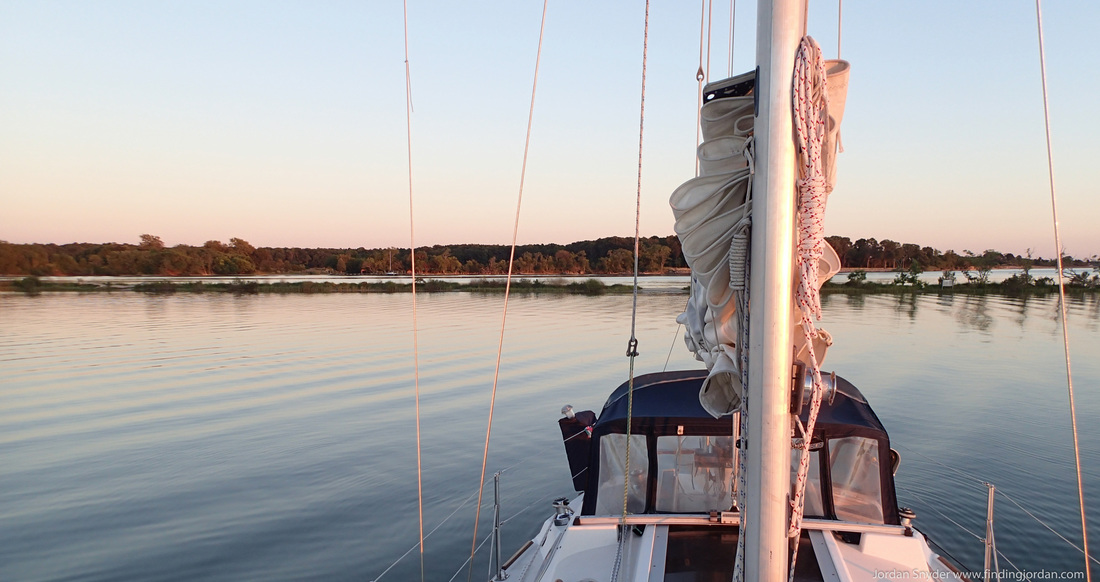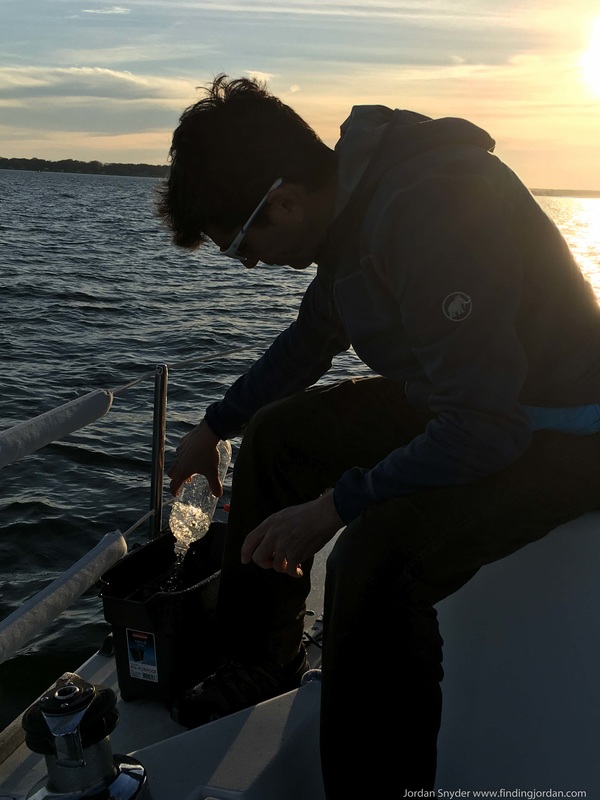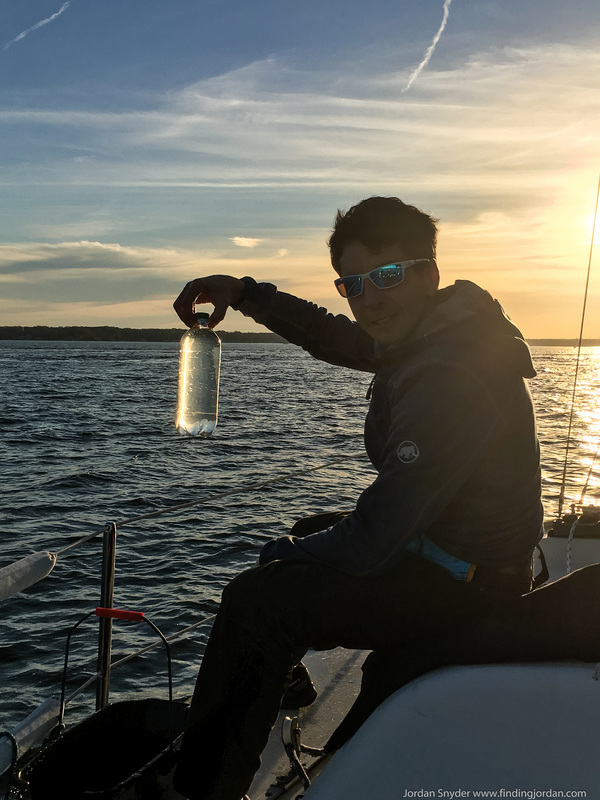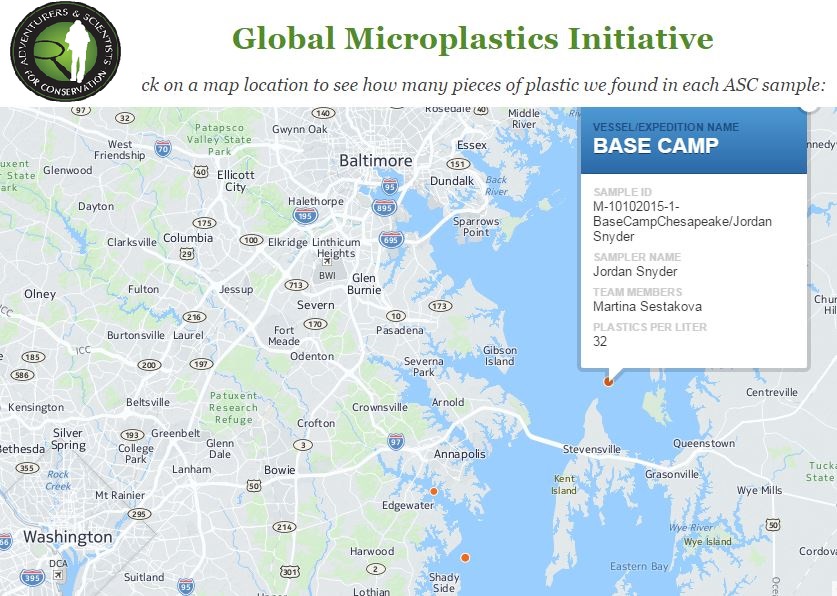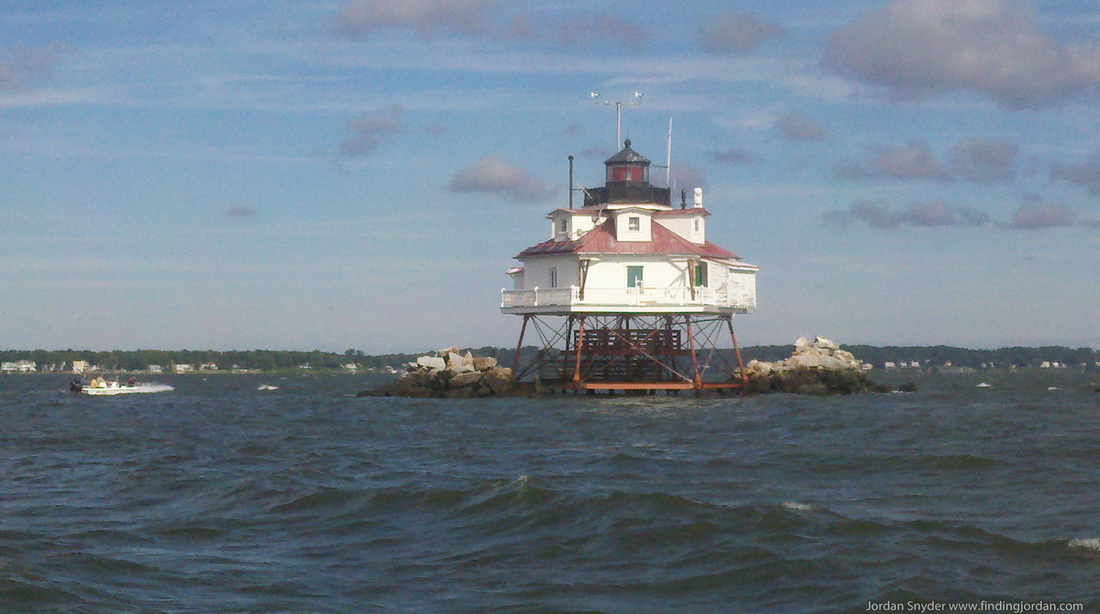By: Jordan Snyder
ASC Microplastics Adventurer
ASC Microplastics Adventurer
We ghosted out of the Chester River at sunrise leaving behind another beautiful, secluded anchorage. There was about 8 knots of wind from behind pushing our 31’ sailboat, Base Camp, west as we sliced through small ripples on the water’s surface. The double spans of the Chesapeake Bay Bridge were in perfect view yet we could barely make out the far shore nearly 7 miles away. I engaged the autopilot, leaving the helm to fend for itself. I grabbed a collection bottle and walked to the bow to gather a sample of the bay’s brackish water.
Working with Adventurers and Scientists for Conservation (ASC), my team combines our sailing adventures with ASC’s effort to study the presence and quantity of microplastics–plastic particles smaller than 5 millimeters in size–polluting the world’s waters.
Working with Adventurers and Scientists for Conservation (ASC), my team combines our sailing adventures with ASC’s effort to study the presence and quantity of microplastics–plastic particles smaller than 5 millimeters in size–polluting the world’s waters.
We gather our water samples around the Chesapeake Bay to send to ASC’s lab for analysis. Samples are filtered, plastic particles are counted, and the results are mapped on the ASC Microplastics page. Adventurers have collected samples from all over the world for this project and the organization has observed microplastic particles in 89% of samples analyzed (as of March 10, 2016).
On Base Camp, we gather samples following detailed protocols.. We rinse a 1-liter bottle 3 times in the bay, fill it up with our water sample, and seal the bottle’s lid underwater to reduce the risk of contamination. Even the clothing we wear during sampling must be taken into consideration. For instance, fleece or synthetic clothing is not allowed. For each sample collected, we document our latitude/longitude, water temperature, current, wind direction, and several other items.
As we explore the Chesapeake Bay and enjoy its many picturesque inlets, lighthouses, sandy beaches, and charming towns, we will continue to gather water samples. Our goal is to collect as much data as possible from the 64,000 square miles of water the bay contains. Our samples from the its river confluences, busy shipping channels,and secluded coves will continue to be an integral part of the ASC Global Microplastics Initiative and the larger effort to address the ubiquitous presence of microplastics in the world’s water supply.
Learn more about the Global Microplastics Initiative and other ASC projects on our website, the Field Notes blog, and our Facebook, Twitter, Instagram and Google+ pages.
Follow Jordan as he continues to explore the Chesapeake and beyond at findingjordan.com.
Follow Jordan as he continues to explore the Chesapeake and beyond at findingjordan.com.

